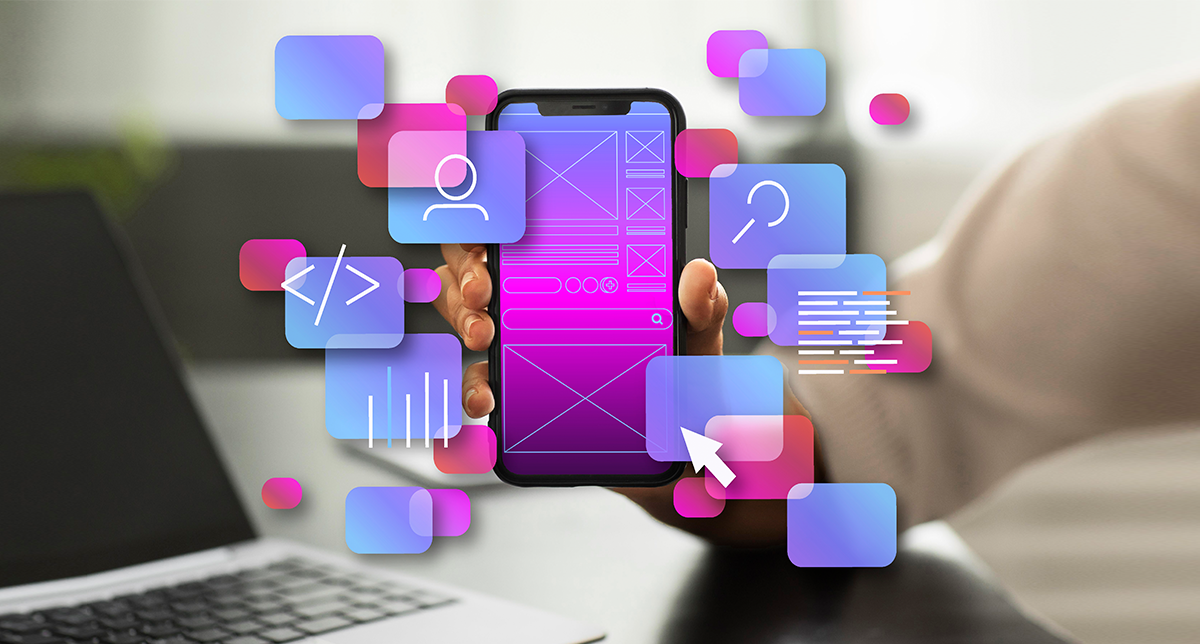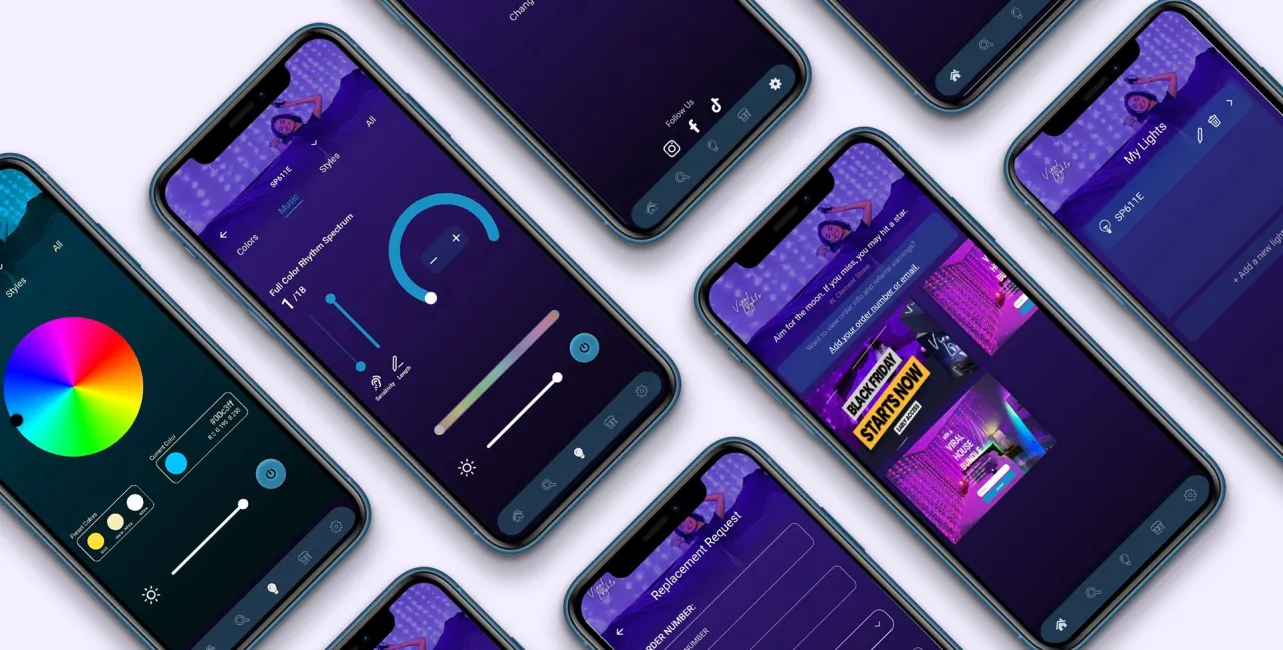
The ‘Design First’ philosophy is a revolutionary approach in the realm of app development. It emphasizes the importance of starting the development process with a strong design foundation, ensuring that the final product is not only visually appealing but also user-friendly and aligned with the users’ needs.
This philosophy advocates for design-centric app development, where every decision is made with the user experience in mind. Adopting a design-first approach allows developers and designers to create more engaging, intuitive, and successful applications, ultimately setting the stage for a new era of app innovation and design trends.
Table of Contents
The Essence of Design-Led Mobile Development
Defining Design-First in the Context of Mobile Apps

Source: metizsoft.com
Design-first in the context of mobile apps refers to a development methodology where design is not an afterthought but the starting point of the app development process. This approach is centered around principles of design-first apps, which dictate that understanding the user’s needs, preferences, and behaviors should guide the app’s design and functionality. It marks a shift from traditional development processes, emphasizing the critical role of design in creating effective and engaging mobile applications. By adopting a design-first strategy, an app development company is better equipped to deliver products that resonate with its target audience.
The Importance of Prioritizing Design Early On
This early focus on design helps identify potential usability issues before they become costly to fix, saving time and resources in the long run. Additionally, it fosters creativity and innovation, enabling designers and developers to explore various solutions to enhance the app user experience. In essence, a design-first approach is key to building innovative mobile apps that not only look great but also perform seamlessly.
Strategies for Implementing Design-First in App Development
Integrating Design and Development Teams
This integration fosters a collaborative environment where designers and developers work closely from the project’s inception, ensuring that design considerations are integrated throughout the development process. By breaking down the integration between these teams, app development strategies can be more cohesive, leading to a more streamlined and efficient production cycle that prioritizes user experience from the very start.
Agile Methodology in Design-First Approaches
Adopting an Agile methodology within a design-first approach has proven to be a transformative strategy. It fosters a collaborative environment where assessment is not only encouraged but is a fundamental part of the design process. Below, we delve into the key aspects of Agile methodology that contribute significantly to its effectiveness in design-first approaches:
- Iterative Design: Agile methodology champions an iterative design process, which allows for continuous refinements based on real user feedback and testing outcomes. This iterative cycle ensures that the design evolves in a way that remains aligned with user expectations and needs. By incorporating feedback at every stage, the final product is more likely to fulfill its intended purpose effectively, thereby enhancing user satisfaction and engagement.
- Early and Continuous Delivery: One of the core principles of Agile is the emphasis on early and continuous delivery of working versions of the product. This approach enables stakeholders to engage with and evaluate design elements in a practical context, offering immediate and actionable feedback. Such early visibility into the product’s development process not only helps in identifying potential issues but also in ensuring that the product’s evolution is in sync with the stakeholders’ vision and expectations.
- Cross-functional Teams: Agile methodology fosters an environment of cross-disciplinary collaboration, encouraging teams comprising designers, developers, and other stakeholders to work closely together. This collaborative setup ensures seamless integration of design and development efforts, leading to a more coherent and unified product vision. By working in tandem, designers and developers can quickly iterate on ideas, resolve issues, and refine the product in real time, thereby accelerating the development process.
- Adaptability: At its core, Agile is about adaptability—being able to respond to user feedback, market changes, and new insights swiftly and effectively. This flexibility is crucial in maintaining the relevance and appeal of the design throughout the development process.
This synergy between Agile practices and design-centric thinking leads to outcomes that are innovative, user-friendly, and highly adaptable to the changing digital landscape. As the digital world continues to evolve, the principles of Agile provide a solid foundation for creating products that are not only relevant at the time of launch but remain so in the face of future challenges and opportunities.
Best Practices in Design-First App Development
Balancing Aesthetics with Functionality
Striking the right balance between aesthetics and functionality is paramount. This balance ensures that apps are not only visually appealing but also practical and easy to use. Best practices in app design dictate that user interfaces should be clean and uncluttered, yet rich in features that users need and value. This approach demands a deep understanding of the user’s needs so that every design element serves a purpose, enhancing the overall usability of the app without sacrificing its visual appeal.
Leveraging the Latest Design Tools and Technologies
To stay at the forefront of trends in app innovation, developers and designers must leverage the latest design tools and technologies. These tools offer advanced capabilities that can significantly streamline the design process, from prototyping to final product development. Utilizing state-of-the-art software enables teams to experiment with new ideas and bring them to life more efficiently.
Current Trends Influencing App Innovation and Design
Incorporating AI and Machine Learning in Design

Source: zilliondesigns.com
AI and machine learning are increasingly being integrated into the design process, offering new ways to enhance user engagement and streamline operations. These technologies can analyze user interactions and feedback to inform design decisions, automate routine design tasks, and even generate design elements. This integration represents a significant shift in how apps are developed, enabling more personalized, responsive, and intelligent applications.
Sustainable and Ethical Design Practices
In the modern digital landscape, where the environmental impact and ethical considerations of technology are increasingly scrutinized, adopting sustainable and ethical design practices has become essential. These practices not only contribute to the creation of more responsible and inclusive digital products but also align with the growing consumer demand for transparency and sustainability. The following are key steps involved in integrating sustainable and ethical design practices into app development:
- Minimizing Digital Waste: Sustainable design also entails minimizing digital waste by creating features and updates that extend the app’s lifespan. This approach reduces the frequency and necessity for downloads and updates, which in turn conserves bandwidth and reduces energy consumption associated with data transfer and storage. By designing with longevity in mind, developers can contribute to a reduction in digital clutter and waste, promoting a more sustainable use of digital resources.
- Inclusive Design: Ethical design practices emphasize the importance of inclusivity, ensuring that apps are accessible to all users, including those with disabilities. This commitment to inclusivity involves adhering to accessibility guidelines, incorporating features that enhance usability for everyone, and designing interfaces that accommodate a wide range of users.
- Data Privacy: In today’s digital age, data privacy has become a paramount concern among users. Prioritizing user data privacy and security in app design is a crucial ethical consideration. This involves implementing robust security measures, being transparent about data usage, and giving users control over their personal information. Developers can establish credibility and guarantee the ethical management of personal data by treating user data with the highest regard and integrity.
Integrating these sustainable and ethical design practices into the development process is not just about mitigating negative impacts or adhering to regulations; it’s about actively contributing to a more sustainable and equitable digital future. This approach not only benefits users and the environment but also sets a standard for responsible innovation in the tech industry.
As we look towards the future, the principles of design-first app development will continue to guide app innovation, shaping how we create digital products that resonate with users. By adhering to these principles, app development companies and independent app builders alike can ensure that their products not only meet the current demands of the market but also anticipate the needs and desires of future users. In doing so, they will continue to push the boundaries of what’s possible, crafting experiences that delight, engage, and inspire.








